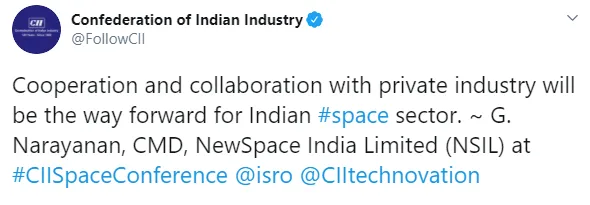ISRO To Empower Start-Ups, MSMEs To Carry Out Their Own Space Missions: ISRO Chairman

Dr Sivan said several new policies and legislations are being framed to encourage private sector participation and make the business environment easier for private players
Speak of the Indian space tech sector and only one thing comes to our mind - the Indian Space Research Organisation (ISRO) and its notable space missions such as Chandrayaan-1 (2008), Mars Orbiter Mission or Mangalyaan (2013), and Chandrayaan-2 (2019) among others.
Today, ISRO is one of the largest space agencies in the world and maintains a large fleet of communication, (INSAT)/Geostationary Satellites (GSAT) remote sensing, navigation, and scientific satellites.
While the state-owned agency has been responsible for all space-related activities in the country, it has always encouraged partnership with private players, especially for the manufacturing of components.

According to a report titled “Preparing to scale new heights: Enhancing private participation in India’s commercial space sector” published in January 2020 by PwC, about 80 percent of the Polar Satellite Launch Vehicle (PSLV) production gets outsourced to private industries. Also, over 120 companies had contributed to the manufacturing of components during the Mars Orbiter Mission (MoM).
The report also added that the Indian space economy is valued at $7 billion, and forms 2 percent of the global space economy. The Indian space sector needs to grow at an approximate rate of 48 percent CAGR over the next five years in order to reach its target of $50 billion.
Realising the potential of future space technology, the government announced new reforms in the space sector to include the participation of private players in space related activities. In June, the Union Cabinet announced the formation of an autonomous nodal agency, Indian National Space Promotion and Authorisation Centre (IN-SPACe), an extension of ISRO, which is aimed at monitoring private players involved in space related activities.


